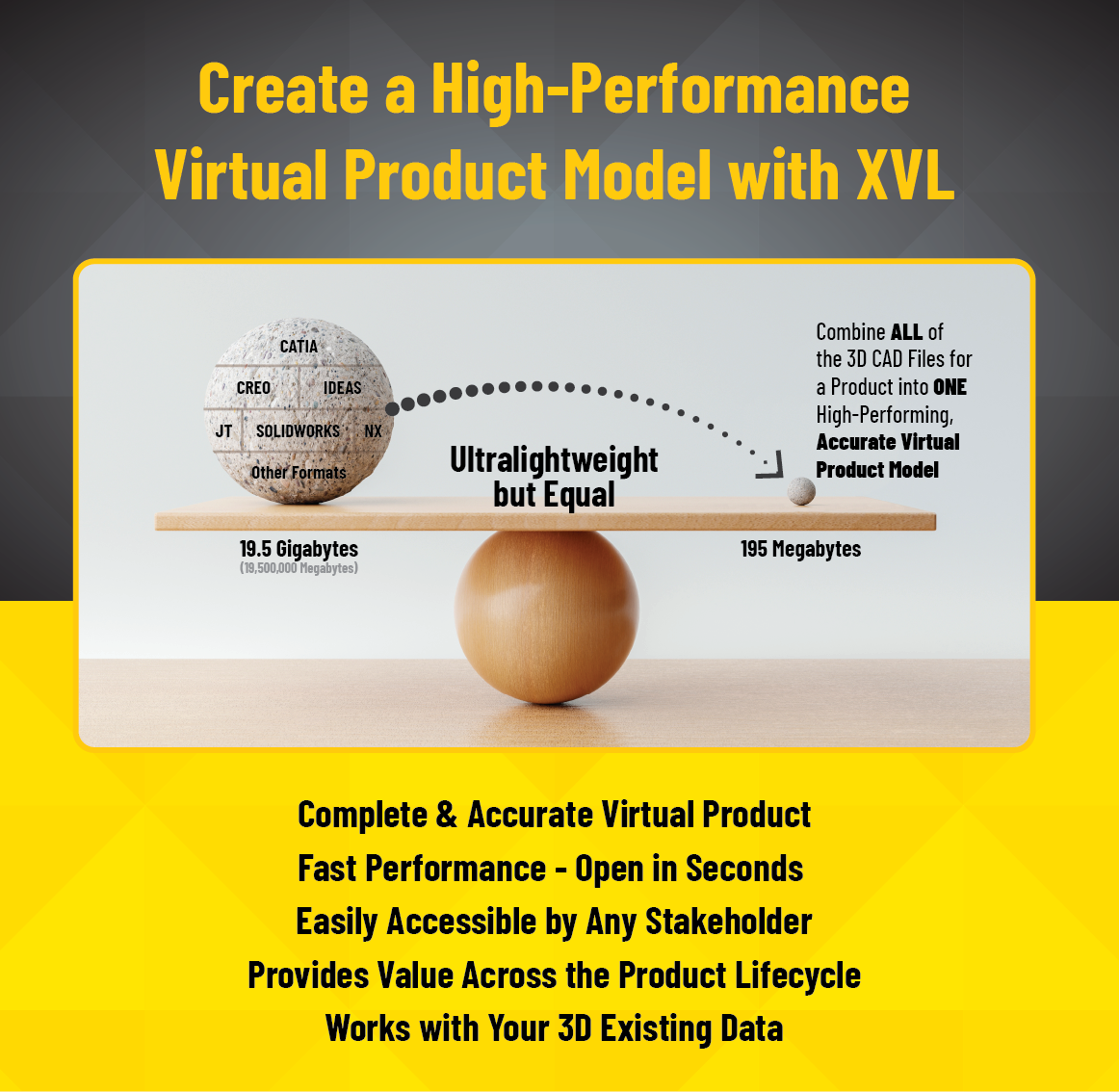How Mitsubishi Revolutionized Their Manufacturing Planning with XVL
This blog post highlights the key elements of Mitsubishi Agricultural Machinery's transformation using XVL technology, providing valuable insights for manufacturing planning professionals looking to modernize their processes.

Manufacturing Workflow - Before and After Using XVL
How Mitsubishi Agricultural Machinery Transformed Assembly Processes with XVL
 Companies must constantly evolve in today’s fast-paced manufacturing environment to remain competitive. Mitsubishi Agricultural Machinery (MAM), part of Mitsubishi Heavy Industries, faced this challenge head-on by revolutionizing their assembly processes through the adoption of XVL, a powerful 3D data solution developed by Lattice Technology.
Companies must constantly evolve in today’s fast-paced manufacturing environment to remain competitive. Mitsubishi Agricultural Machinery (MAM), part of Mitsubishi Heavy Industries, faced this challenge head-on by revolutionizing their assembly processes through the adoption of XVL, a powerful 3D data solution developed by Lattice Technology.
The Challenge: Speed and Accuracy in Assembly
Like many manufacturers, MAM needed to accelerate its product development cycles to meet changing market demands. Previously, its assembly workflow depended heavily on the experience of industrial engineers, who would first interpret 2D drawings and then manually develop the assembly process. This traditional approach posed significant problems, especially when it came to transferring knowledge from experienced engineers to new workers. As products became more complex and customer demands for faster turnaround times increased, MAM’s existing assembly process was no longer sustainable.
The Solution: Concurrent Engineering with XVL
To overcome these hurdles, MAM adopted a concurrent engineering approach using XVL technology. This methodology allowed the integration of design and manufacturing processes, drastically reducing the time required to transition from product design to production.
A key challenge in concurrent engineering is managing vast amounts of data. MAM's products have hundreds of CAD files, making it difficult for traditional systems to handle. XVL solved this problem with its ultra-lightweight format, reducing CAD file sizes to just 0.5% of their original size while maintaining accuracy. This allowed MAM to combine large assemblies with thousands of parts on standard computers and mobile devices, making it easier for all stakeholders to collaborate in real-time.

Changing the Assembly Workflow
Before implementing XVL, MAM’s production preparation began only after the assembly process was designed, leaving little room for adjustments or fine-tuning. By integrating XVL Studio into their workflow, MAM now digitally creates and verifies the assembly process before production begins. Engineers can simulate the process, visualize tooling requirements, and address potential issues early, ensuring that the final product is assembled efficiently and accurately.

This new workflow not only sped up production but also addressed the critical issue of knowledge transfer. By creating a digital, easily understandable assembly process, MAM could standardize work instructions, allowing less experienced workers to follow the same procedures as seasoned engineers. With 3D models and animations incorporated into work instructions, even complex processes were easy to comprehend and execute.
The Results: Improved Efficiency and Knowledge Retention
 The introduction of XVL led to remarkable improvements at MAM. By simulating assembly processes digitally, they could identify and resolve potential issues before production, reducing costly rework and delays. The ability to share 3D models and detailed instructions using familiar tools like Microsoft Excel made the transition seamless for the engineering team.
The introduction of XVL led to remarkable improvements at MAM. By simulating assembly processes digitally, they could identify and resolve potential issues before production, reducing costly rework and delays. The ability to share 3D models and detailed instructions using familiar tools like Microsoft Excel made the transition seamless for the engineering team.
The benefits of XVL didn’t stop at faster production. The digital documentation of assembly processes has been instrumental in solving the succession planning issue, allowing knowledge to be passed down effectively from experienced engineers to newer workers. Moreover, workers can now focus on product innovation rather than spending excessive time deciphering complex blueprints and processes.
EXCITEMENT OVER XVL'S INNOVATION
"The introduction of Lattice Technology's XVL solution has sparked motivation to transform our assembly workflow and work instructions," said Masashi Kawamoto from the Development Management Division at MAM. Kawamoto also noted positive feedback from assembly process designers: "They are excited about the innovation brought by the XVL solution."
XVL has become an essential tool for assembly designers at MAM. The transition to digital documentation was seamless, with XVL allowing easy integration of work instructions linked to part geometry and animations. Lattice Technology offers several ways to access the interactive 3D content and related information, such as work instructions, including through Microsoft Excel, interactive web pages, and a browser-based Windows application. At MAM, they use the free Microsoft Excel add-on. When viewing the assembly in Excel, selecting a part name highlights the corresponding part in the 3D model.
Users can also save custom view settings like orientation, layout, and camera angle through a feature called 3D Snapshot. With just one click, Snapshot restores the desired position of a 3D model, enabling designers to optimize work instructions for specific tasks.
Conclusion: A Small Change with a Big Impact
At first glance, adopting XVL might seem like a small step for MAM, but in reality, it has driven significant operational change. By integrating XVL into their assembly workflow, MAM has not only reduced lead times but also enhanced accuracy, collaboration, and knowledge retention. For manufacturers looking to improve efficiency, reduce errors, and bring products to market faster, MAM’s success with XVL offers a compelling case for embracing digital solutions in manufacturing.
As the market continues to demand quicker turnaround times and greater precision, adopting advanced technologies like XVL will likely become the norm rather than the exception. For companies still relying on traditional workflows, the message is clear: digital transformation is the key to staying competitive in the modern manufacturing landscape.
Want to Learn More?
Send us your question by following the link below.
